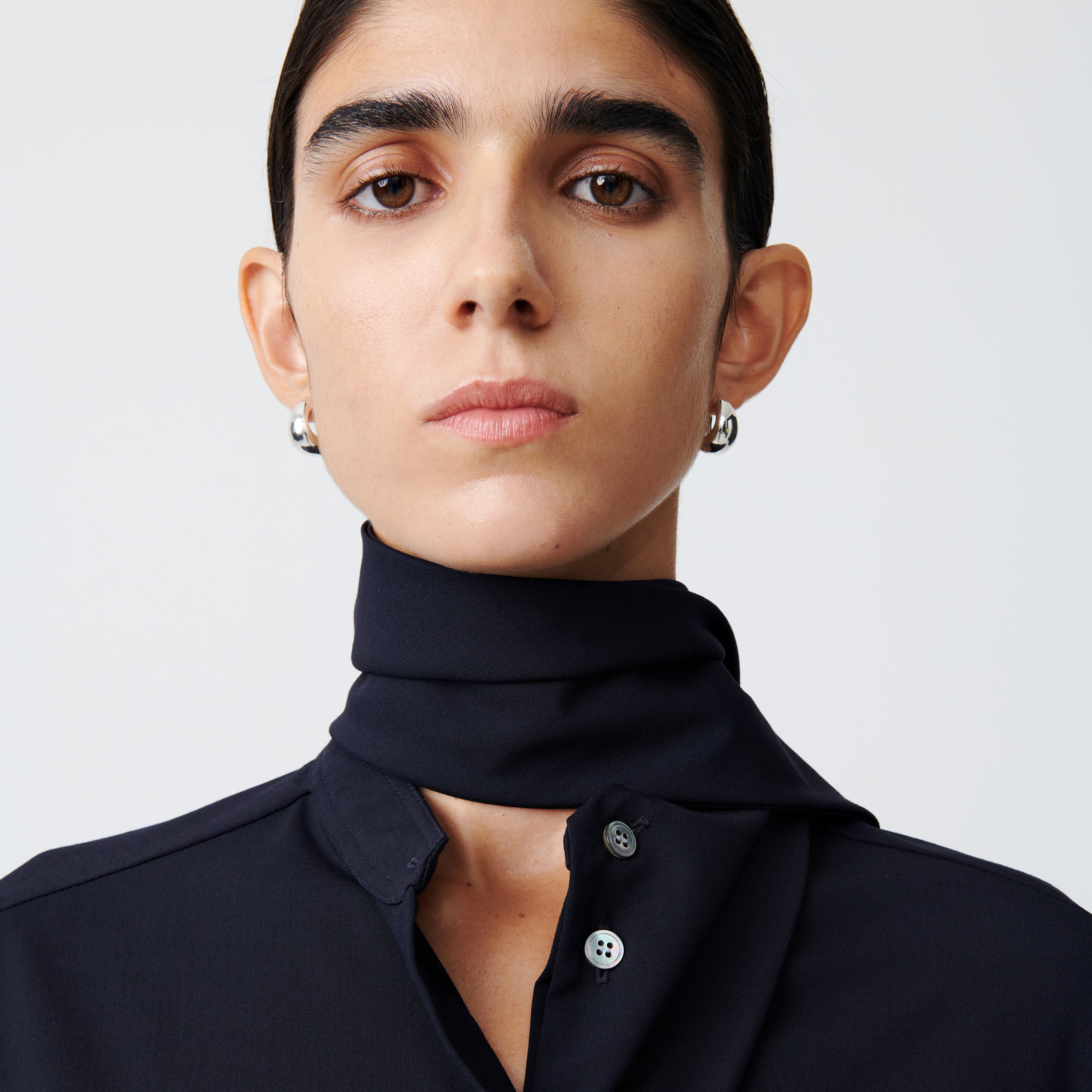


In common with many people, my parents have used the enforced domesticity of lockdown to finally sort out old boxes of paperwork and photographs lurking in the top of the wardrobes. Seeing these photos, it’s interesting to notice what still endures in terms of our outfits, the pieces which never look dated or embarrassing: classic white or striped t-shirts, crew neck sweats, bomber jackets and, most persistently, heavy, dark denim jeans. The shot where this really struck me was in a black and white image collected from an uncle’s possessions after he died, taken on some kind of cadet training camp. An anonymous friend is on a training exercise late at night in a forest wearing white tennis shoes, a khaki smock and wide-legged, army-issue jeans in an inky, unyielding denim, finished with a deep turn up. He looks the absolute business.
Wearing jeans cut wide and straight reverts your denim to its original style – when it was a utilitarian item designed for durability, comfort and ease of movement just as much as modern ‘athleisure’ wear is. The elements of form, shape and function which dictated that original workwear style remain as true now as they did then: for both men and women, a low rise, button fly upper leading to legs which hang loose off the limbs, preferably to be cuffed before they break on the shoe, will be the most comfortable item you can wear. It’s why that cut crops up everywhere form Dorothea Lange’s photos of 1930s dustbowl farmers to Marlon Brando’s biker crew in The Wild One.
However, it’s not just about a capacious cut: cheap fabric in a boxy style will flap around your limbs, cling in inclement or hotter weather, end up fraying around the rear hems and bring back terrible memories of blim-burn infested early Nineties stoner wear from Dready, Spliffy and countless other Camden Market knock-offs.
Proper denim comes with an element of commitment – its original rigidity and weight will soften down with time into something more fibrous and giving, shaped to your own body and with unique fading, horizontal whiskering (to the front) and honeycombing (behind the knees). The Japanese term tate-ochi translates as ‘vertical falls’ and refers to the thin stripes that gradually appear in denim made from slub yarn, but these all take time to emerge.
However, contrary to popular assumption, real denim doesn’t require a huge degree of aftercare and maintenance. In David Marx’s Ametora – the key text detailing how Japan adopted the styles and codes of American menswear (before perfecting them and exporting them back to the USA) he compares the curatorial reverence with which western denim collectors handle their prize purchases, and the everyday battering that the Japanese commonly subject them to (short version: a complex regime of freezing, dry brushing, garment rotation and cold-soaking versus ‘chucking them in a regular machine wash and drying them like normal.’). Never forget that jeans are workwear, and as such are supposed to be lived in, loved and can be handled roughly – providing that you buy the correct pair to start with.
None of this comes cheap in terms of upfront cost: but real jeans only seem expensive if you’re comparing them to denim that will last six months. Again, return to denim’s functional origins and think of these jeans as a piece that you could be wearing every day, and calculate a cost per-wear in the way that you might with a bespoke suit or a pair of hand-made shoes. This is another reason to opt for a wider-leg style – as a timeless cut, a change in fashion won’t suddenly consign your jeans to an undisturbed pile in the back of the wardrobe. With different folds, lengths and tapers of turn-up a wider pair of jeans also give greater silhouette flexibility than a narrower style. And in the current climate, investment pieces are more important than ever – as we re- orientate ourselves financially, socially and ethically after the recent travails, the mantra ‘buy less, buy better’ should guide your choices more than ever.
To this end, Studio Nicholson supply several key jeans. For women, the Ruthe Jean is a classic high waist cut in indigo with two square patch pockets to the back, while the Greta is an even wider leg with a pleated front. For men, the Pyad Pant comes with a wider leg, a slightly neppy denim, two side pockets in seam, a coin pocket at the front and two beveled back patch pockets. All are made with denim from London’s very own Blackhorse Lane Ateliers, they’re staples that you can build every daily outfit around – and they’re guaranteed to still look good when the family photos are dug out in 30years time during the next lockdown.




